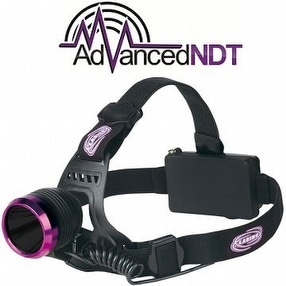Send enquiry to Advanced NDT Ltd.
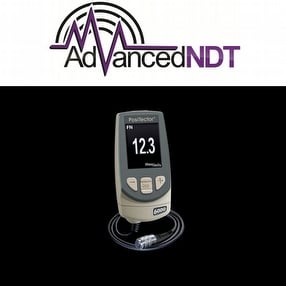
DEFELSKO Coating Thickness Gauges
EngineeringCoating Thickness Gauges – Range
Product Code: DEFELSKO COATING THICKNESS GAUGES
Coating thickness is an important variable that plays a role in product quality, process control, and cost control. Measurement of film thickness can be done with many different instruments. Understanding the equipment that is available for film thickness measurement and how to use it is useful to every coating operation. The issues that determine what method is best for a given coating measurement include the type of coating, the substrate material, the thickness range of the coating, the size and shape of the part, and the cost of the equipment. Commonly used measuring techniques for cured organic films include non-destructive dry film methods such as magnetic, eddy current, ultrasonic, or micrometer measurement and also destructive dry film methods such as cross-sectioning or gravimetric (mass) measurement. Methods are also available for powder and liquid coatings to measure the film before it is cured. Magnetic film gages are used to non-destructively measure the thickness of a non-magnetic coating on ferrous substrates. Most coatings on steel and iron are measured this way. Magnetic gages use one of two principles of operation: magnetic pull-off or magnetic/electromagnetic induction.
MAGNETIC FILM THICKNESS GAUGES
Magnetic Pull-off Magnetic pull-off gauges use a permanent magnet, a calibrated spring, and a graduated scale. The attraction between the magnet and magnetic steel pulls the two together. As the coating thickness separating the two increases, it becomes easier to pull the magnet away. Coating thickness is determined by measuring this pull-off force. Thinner coatings will have stronger magnetic attraction while thicker films will have comparatively less magnetic attraction. Testing with magnetic gages is sensitive to surface roughness, curvature, substrate thickness, and the make up of the metal alloy. Magnetic pull-off gages are rugged, simple, inexpensive, portable, and usually do not require any calibration adjustment. They are a good, low-cost alternative in situations where quality goals require only a few readings during production. Pull-off gages are typically pencil-type or rollback dial models. Pencil-type models use a magnet that is mounted to a helical spring that works perpendicularly to the coated surface. Most pencil-type pull-off gages have large magnets and are designed to work in only one or two positions, which partially compensate for gravity. A more accurate version is available, which has a tiny, precise magnet to measure on small, hot, or hard-to-reach surfaces. A triple indicator ensures accurate measurements when the gage is pointed down, up, or horizontally with a tolerance of ±10%.
Rollback dial models are the most common form of magnetic pull-off gage. A magnet is attached to one end of a pivoting balanced arm and connected to a calibrated hairspring. By rotating the dial with a finger, the spring increases the force on the magnet and pulls it from the surface. These gauges are easy to use and have a balanced arm that allows them to work in any position, independent of gravity. They are safe in explosive environments and are commonly used by painting contractors and small powder coating operations. Typical tolerance is ±5%.
Magnetic and Electromagnetic Induction Magnetic induction instruments use a permanent magnet as the source of the magnetic field. A Hall-effect generator or magneto- resistor is used to sense the magnetic flux density at a pole of the magnet. Electromagnetic induction instruments use an alternating magnetic field. A soft, ferromagnetic rod wound with a coil of fine wire is used to produce a magnetic field. A second coil of wire is used to detect changes in magnetic flux. These electronic instruments measure the change in magnetic flux density at the surface of a magnetic probe as it nears a steel surface. The magnitude of the flux density at the probe surface is directly related to the distance from the steel substrate. By measuring flux density the coating thickness can be determined
Electronic magnetic gages (e.g. PosiTector 6000 F Series, PosiTest DFT Ferrous) come in many shapes and sizes. They commonly use a constant pressure probe to provide consistent readings that are not influenced by different operators. Readings are shown on a liquid crystal display (LCD). They can have options to store measurement results, perform instant analysis of readings, and output results to a printer or computer for further examination. Typical tolerance is ±1%. The manufacturer's instructions should be carefully followed for most accurate results. Standard test methods are available in ASTM D 1186, D 7091-05, ISO 2178 and ISO 2808.
EDDY CURRENT Eddy current techniques are used to non-destructively measure the thickness of non-conductive coatings on non-ferrous metal substrates. A coil of fine wire conducting a high-frequency alternating current (above 1 MHz) is used to set up an alternating magnetic field at the surface of the instrument's probe. When the probe is brought near a conductive surface, the alternating magnetic field will set up eddy currents on the surface. The substrate characteristics and the distance of the probe from the substrate (the coating thickness) affect the magnitude of the eddy currents. The eddy currents create their own opposing electromagnetic field that can be sensed by the exciting coil or by a second, adjacent coil. Eddy current coating thickness gages (e.g. PosiTector 6000 N Series) look and operate like electronic magnetic gages. They are used to measure coating thickness over all non-ferrous metals. Like magnetic electronic gages, they commonly use a constant pressure probe and display results on an LCD. They can also have options to store measurement results or perform instant analysis of readings and output to a printer or computer for further examination. The typical tolerance is ±1%. Testing is sensitive to surface roughness, curvature, substrate thickness, type of metal substrate and distance from an edge. Standard methods for the application and performance of this test are available in ASTM B 244, ASTM D 1400, D 7091-05 and ISO 2360. It is now common for gauges to incorporate both magnetic and eddy current principles into one unit (e.g. PosiTector 6000 FN, PosiTest DFT Combo). Some simplify the task of measuring most coatings over any metal by switching automatically from one principle of operation to the other, depending upon the substrate. These combination units are popular with painters and powder coaters.
Contact us at Advanced NDT Limited for further Information and pricing.
Click here for more information on Coating Thickness Gauges – Range
Coating, Gauges, Paint, Thickness, film Product code: DEFELSKO COATING THICKNESS
Advanced NDT Ltd.
More products from Advanced NDT Ltd.
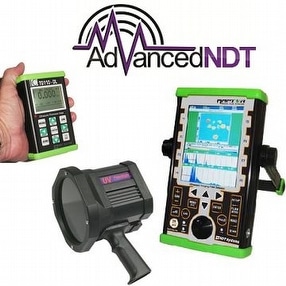
NDT Products & Equipment & Pages
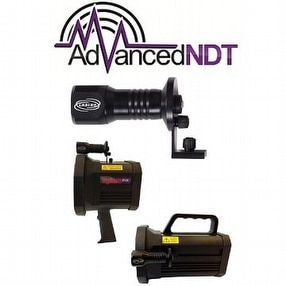
Labino En-Liten White Light add on
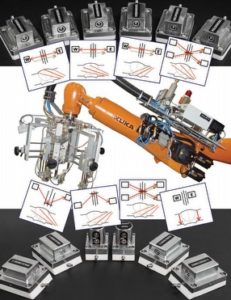
ISonic AUT 16/32 Multi Channel Flaw Detector
